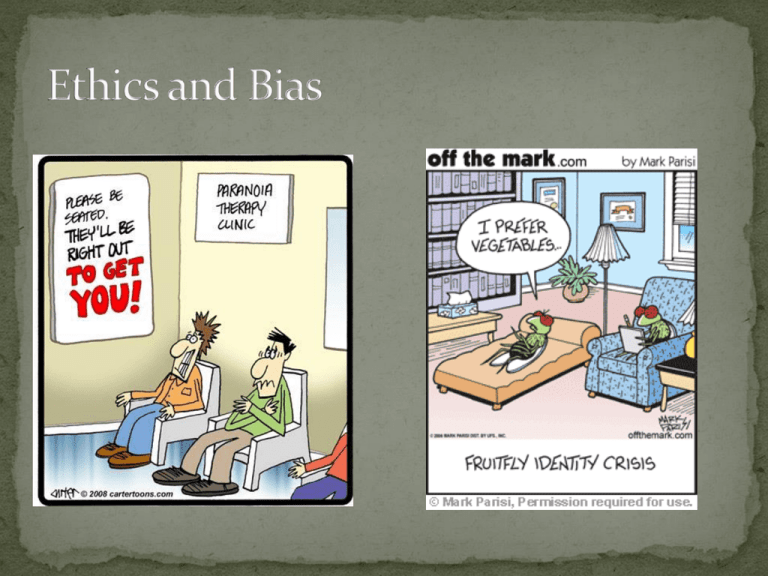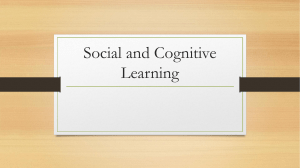Bias and Ethics
advertisement

Recall / look up the following: • Bandura - Bobo Doll Experiment • The Milgram Experiment Project MKUltra What do you think? Briefly describe each study. • a system of moral principles • the rules of conduct recognized in a particular group, culture, etc. •the branch of philosophy dealing with values relating to human conduct, with respect to the rightness and wrongness of certain actions and to the goodness and badness of the motives and ends such actions. Source: dictionary.com • • • • Confidentiality Endangering the subject/respondent Informed consent Others? Milgram: • 26 of 40 “teachers” continued with the ‘shocks’ of 450 volts. • 14 of 40 halted the ‘shocks’ before the 450 voltage in fear of hurting the learner. Bandura Bobo Dolls: • Children even elected to grab toy guns even though the woman did not abuse the bobo doll with any. • Influenced children it was okay to be aggressive because an adult showed it first. John Watson: • Little Baby Albert experiment (1920) – was conditioned to be afraid of anything fuzzy or white due to loud noises associated with the site of rabbits and rats. Was unable to desensitize his fear. Stanford Prison Experiment: • Males were selected to be either guards or prisoners. They fell so deeply into their roles that the experiment ceased after six days due to torture techniques and poor living conditions forced upon by the guards. • Has been compared to Abu Ghraib (mistreatment of Iraqi prisoners in the early 2000s. *It’s a very long document, but here is a link to a summary. Below is a very basic list of the principles outlines in the document. 1. Respect for Human Dignity: 2. Respect for Free and Informed Consent: 3. Respect for Vulnerable Persons. 4. Respect for Privacy and Confidentiality. 5. Respect for Justice and Inclusiveness. 6. Balancing Harms and Benefits. 7. Minimizing Harm. There are dozens of types of biases that affect our decision making and reveal cognitive, behavioural, and social tendencies. These biases can be on the side of the researcher or the participant, and will be discussed more later… • Tendency to think that future probabilities are altered by past events, when in reality they are unchanged. ie. Superbowl coin toss – NFC won the coin flip the past 14 years.... until 2012. Odds of that happening - 16 000:1 75% of people who bet on that event selected the NFC to win ..... AFC won the coin toss. Occurs when people claim more responsibility for themselves for results of joint action than an outside observer would. ie. Who is accountable for a sporting win? Or movie production? A person’s sense of self can impact the results in a study • Tendency for people to favour information that confirms their beliefs or values • People display this by gathering information selectively, or otherwise interpret it in their previous biased way. Emotions are further enhanced if it has to do with a issue they relate with or deeply believe in ie. Abortion, gun control, carcinogens in marijuana and cigarettes, global warming… • People prefer sources that affirm their pre-existing attitudes • Also tend to interpret ambiguous evidence as supporting their existing position. Whether in choosing a research focus, as subjects responding to a study, or in deciding which data to use in our analysis, we need to be aware of bias. Major sources of bias in the research process; Selection of problem being researched The sample design Funding decisions Data collection Data analysis Reporting findings Result – “Being poor leads to premature death” What questions should you be asking to determine whether the study was biased and can be seen as reliable?











